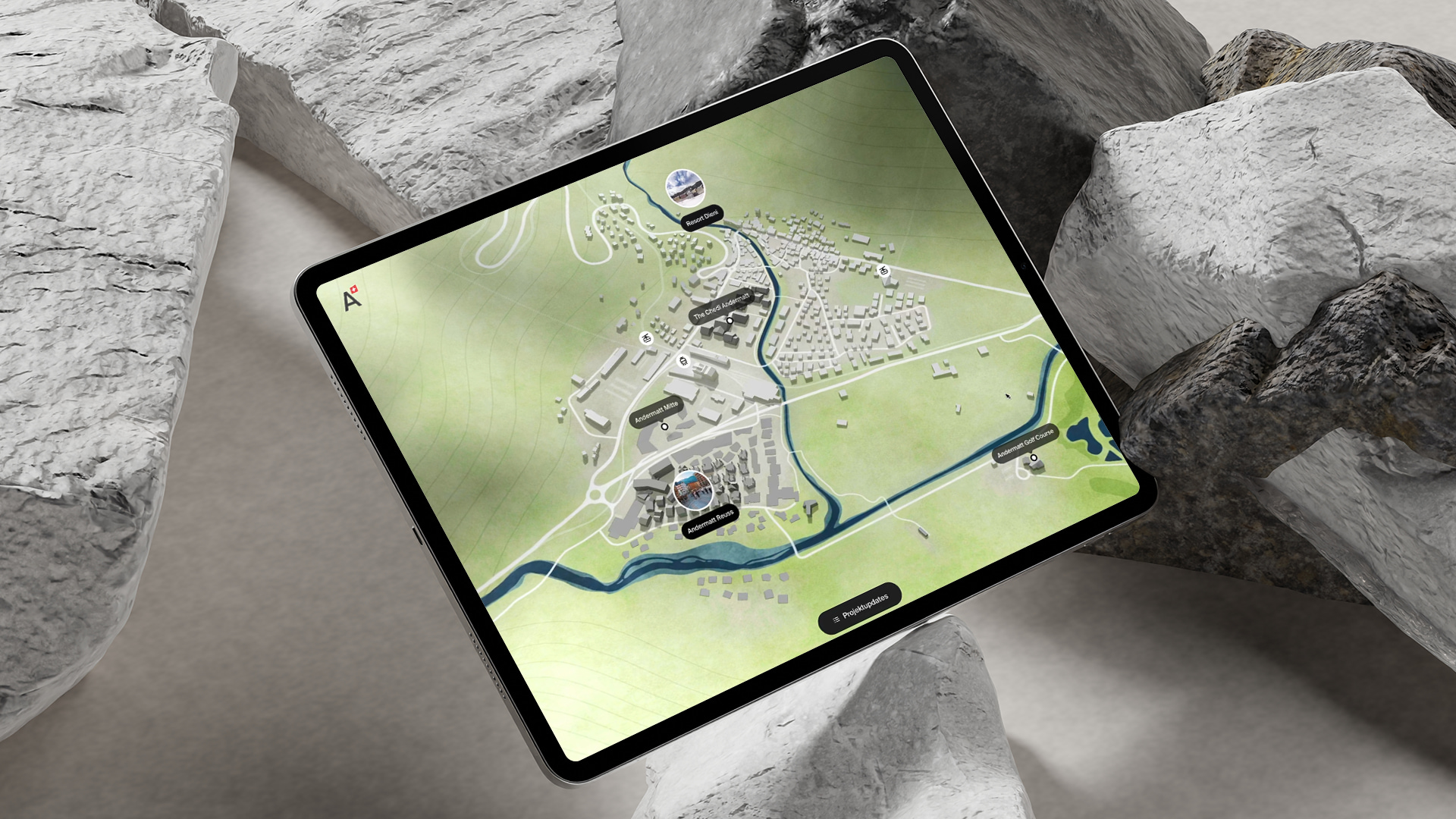People’s escalating desire to explore new places is causing a surge in travel research, bookings, and digital opportunities.
Our DEPT®/Travel experts have compiled the top digital trends of 2024 that can help brands create better experiences, drive sustainable growth, and increase the value of travel bookings.
Despite the ongoing macroeconomic uncertainty, people are prioritizing travel. But such high demand comes with even higher expectations.
The modern traveler doesn’t just want to travel more. They want to travel better.
From airlines and hotels to online booking platforms, companies are pushed to deliver impeccable services and stay culturally relevant and tech-savvy.
Luckily for brands in travel and tourism, these goals are attainable. The unprecedented demand correlates with the rise of available solutions. Now, delivering the sought-after ‘unreasonable’ level of hospitality is within reach, not only for 11 Maddison Park but also for your organization.
To help brands meet customer expectations, we have identified four major digital trends shaping the travel industry.
Trend 01 – A new generation of travelers: The shifting mindsets of Gen Z and Millennials
The travel industry faces an ongoing challenge: meeting the needs of a diverse range of young customers who do not fit the same mold as other generations.
Millennials and Gen Z seek highly personalized, niche experiences. This shift away from traditional travel patterns is becoming more evident with the rise of new trends like “gig-tripping” and “bleisure,” which are further popularized by social media.
How can brands stay in sync with the new generation of travelers?
72%
of Gen-Z consider travel a
priority in their 2024 budget
64%
of global travelers are reducing
spending elsewhere to prioritize
leisure travel in 2024
85%
of Millennials and Gen Zs are
willing to allocate funds for unique
experiences during their vacations
Cultural exploration will be a priority for travelers in 2024. We’re seeing a broad spectrum of cultural curiosity, from gig trippers jetting off to see their favorite artists, to budget bougie foodies.
Naomi Hahn, VP of Strategy at Skyscanner
Brands must stay especially relevant on TikTok
“Our community craves content that provokes wanderlust by highlighting unique destinations and experiences, recommendations, and reviews.”
To stay top of mind with the TikTok audience, brands should:
Explore growth areas e.g. accessible luxury travel, domestic travel, and sustainable travel
Collaborate with creators to enhance credibility and authentically represent the brand.
Create save-worthy content that users find valuable enough to save in their ‘travel folder.’
Sustain audience engagement by actively responding to comments and engaging with users through comments on their videos.

Remember that authenticity reigns supreme, and travel brands need to reflect that by:
- Showcasing real consumer experiences, highlighting both positive and negative experiences in strategic ways.
- Generate less polished creative assets (even at the luxury level), creating a more genuine two-way conversation with consumers.
This approach resonates with the younger generations of travelers, who have become more pragmatic from rising living costs.
So throughout marketing activity, quality and price need to be highlighted first and foremost, with additional elements like sustainability becoming secondary messages – necessary but not a key driver of purchase.
The key to success is creating a consistent experience that is embedded in current consumer needs and supported by authenticity end-to-end.
– Antonio Castiglia, Strategy Director, DEPT®
Trend 02 – Try before you buy: Mixed reality is giving travelers a taste of the real experience
The limitations of screens, PCs, and smartphones have become increasingly apparent. Users crave more immersive, seamless, and intuitive ways to interact with digital content – beyond the confines of the 2D screen.
Immersive, “being there” experiences can help brands drive deeper engagement, fostering emotional connections and informed travel decisions.
And with oncoming technologies such as Apple Vision Pro, brands will need to steer increasingly toward spatial design innovation.
71%
of travelers said they viewed the
quality of their digital experience as
a key factor when booking travel
60%
of people are willing to
book a trip if they can
experience it virtually
$1.5tn
predicted increase in tourism
revenue due to VR by 2030
Today’s travelers want to live like locals, feel inspired by the places they visit, and experience a transformative journey that is wholly their own.
Sarah Somerville, Senior Director, Asia Pacific at Hilton
Experiment with immersive experiences
Immersive experiences allow you to:
Enhance your digital presence
Static online descriptions often fail to capture a destination’s unique appeal. Immersive digital experiences can combine virtual tours, engaging local stories, and user-generated content.
Stand out
Story-driven marketing campaigns and virtual experiences of hotel rooms and services can help businesses build a personal connection with potential customers.
Showcase cultural richness
Developing interactive platforms highlighting local events and cultural experiences helps fully convey the depth of a destination’s culture and experiences.
With Apple’s Vision Pro, the writing is on the wall. While it won’t change the world overnight, you should start experimenting with VR and AR to understand the technology behind it. As you progress with the technology and understand how to leverage it, you’ll be in a stronger position as the immersive future continues to evolve.

A cinematic experience
For Virgin Galactic, DOGSTUDIO/DEPT® created an immersive website that offers potential customers a cinematic, interactive experience. We aimed to help visitors understand what it would be like to be a space explorer and inspire them to dream big and pursue their goals.
I believe that by creating immersive experiences on their websites, travel businesses can:
- Spark imagination and establish a strong emotional connection with their visitors by taking them on a journey.
- Offer an impactful and emotional experience through customer engagement.
Not every brand can create the same immersion level as Virgin Galactic. However, they can still take bold and innovative steps, offer the right-sized experiences to their organization and audience, and in doing so, establish a stronger connection with customers.
– Simon Boas, Senior producer
Trend 03 – AI is setting a new standard in hospitality through personalization
From booking flights to navigating unfamiliar cities, AI is on track to becoming an indispensable travel companion.
AI’s capabilities extend beyond automation and chatbots, encompassing a multifaceted role that elevates hospitality standards and redefines the travel experience.
It can help brands transform their services into a highly personalized journey, like offering each client their own travel concierge.
32%
of all travel industry revenue
is predicted to be influenced by
AI in some capacity in 2024.
75%
of travelers worldwide expect
to use AI to plan accommodations
by 2033.
62%
of millennials say they would appreciate
insights, tips or hints from an AI
companion while on holiday.
In travel, gen AI could take the form of a digital assistant that interacts with customers throughout the journey.
McKinsey & Company
How AI will elevate the traveler experience
Image these applications integrated into your product.
- Efficient browsing of destinations without using multiple platforms, apps, and search engines.
- Personalized customer communication system for airlines and airports that helps create a seamless travel experience and fosters loyalty.
- An itinerary curator tailored to individual’s preferences while incorporating hidden gems and advice from locals.
- A 24/7 real-time travel concierge that predicts potential issues and offers solutions immediately as problems arise during travel.
- An assistant that analyzes taste in music, art, and culture and helps ‘gig-trippers’ book experiences in advance.
- A personalized ticket booking system based on budget, availability, preference, and the type of traveler.

ChatGPT has unleashed an AI frenzy, but often, brands struggle to visualize their applications beyond a standard chatbot framework.
We seem attached to an archaic form of user interface despite LLMs being at the forefront of innovation (note the irony).
LLMs enrich the value of brand data, giving it the general knowledge and ability to create content by itself. This shifts many digital products (like websites) from an outdated content management system to a concept management system, where the product is tailored—but the trigger doesn’t have to be a conversation.
What would that look like for the travel industry?
Imagine looking for places using a specific keyword (e.g. ‘whimsical’) and getting recommendations that don’t contain that, but fit better – because the system knows that what you say is not always what you mean, or what you want.
Or imagine you’ve received a push notification with a dedicated itinerary of fun things to do that happen to be near, open, within budget, and not too exhausting – “Just what I didn’t know I needed!”
Imagine how that looks on the product page, in a check-out system, on a search bar, in a departure board, or in Google Maps—anything but a chatbot.
– Maria Temneanu, Lead Tech Planner, DEPT®
Trend 04 – Archetypes over demographics: Understanding customers’ mindsets is key to an effective website
According to Statista’s forecast, the online travel market is expected to almost double by 2030 compared to 2023.
In a landscape where potential travelers navigate around 40 websites before making a booking, it has become imperative to ensure that your website stands out, is relevant, and builds trust within seconds.
38%
of people will stop engaging with
a website if the content is unattractive.
75%
of users admit to making judgements
about a company’s credibility
based on their website design.
94%
of website first impressions
are design related.
People want hyper-personalized experiences to feel they’re traveling with intention, not just to get out of the country.
Lee Chambers, Psychologist and founder of wellbeing and inclusion agency Essentialise
An engaging experience has never been more crucial
A travel brand’s website is the digital backbone of success in generating demand and sales.
Effective UX research and solutions can directly and positively impact six out of 10 critical factors travelers consider when booking while indirectly influencing the remainder.
The key to driving bookings is to stand out and build trust, but meeting the expectations and needs of thousands of visitors is no easy task. To do so, brands need to understand existing and potential customers.
Relying on demographic-based personas is no longer enough. Instead, leading brands are replacing them with mindset and archetype-based segmentation, which in turn fuels a shift toward a more nuanced approach to web design.
How do you tailor your web experience to each visitor?
By understanding their travel mindset. Here’s how.
First, it is necessary to move beyond old-school macro-segmentation of audiences based on demographics towards hyper-segmentation. Or, as Piero Sierra, Chief Product Officer at Skyscanner, has said, by evolving to help their customers pick their perfect destination, “whatever their trip’s vibe.”
To do so, it is necessary to take a multi-method approach to understanding customers – through surveys, data collection and analysis, experimentation, and field studies.
The key is to grasp the various mindsets of the customer base.

The traditional approach to personas, segmenting by demographics, isn’t flexible enough to accommodate how people are now approaching travel planning and booking. Travelers don’t fall into neat buckets according to age, family status, or location. We need to be led more by their mindsets and motivations.
By gathering customer insights using various research methods, we can understand the unique challenges that a brand’s customers face and create experiences that resonate with the right audiences.
In such a crowded market, connecting with a customer and engaging them on an emotional level is key to setting your brand apart from the rest. Generative AI and machine learning can help you take data and anticipate their wants and needs.
Researching to gather information about customers is only one part of the problem. It’s also key to ensure that we’re implementing those learnings by adapting experiences and constantly reviewing and iterating to measure what’s working and feeding back in those insights.
– Lizzie Astles, Lead UX Designer, DEPT®
DEPT®/Travel is our expert digital team helping travel brands stay ahead.
Questions?
Digital Trends & Research Analyst






